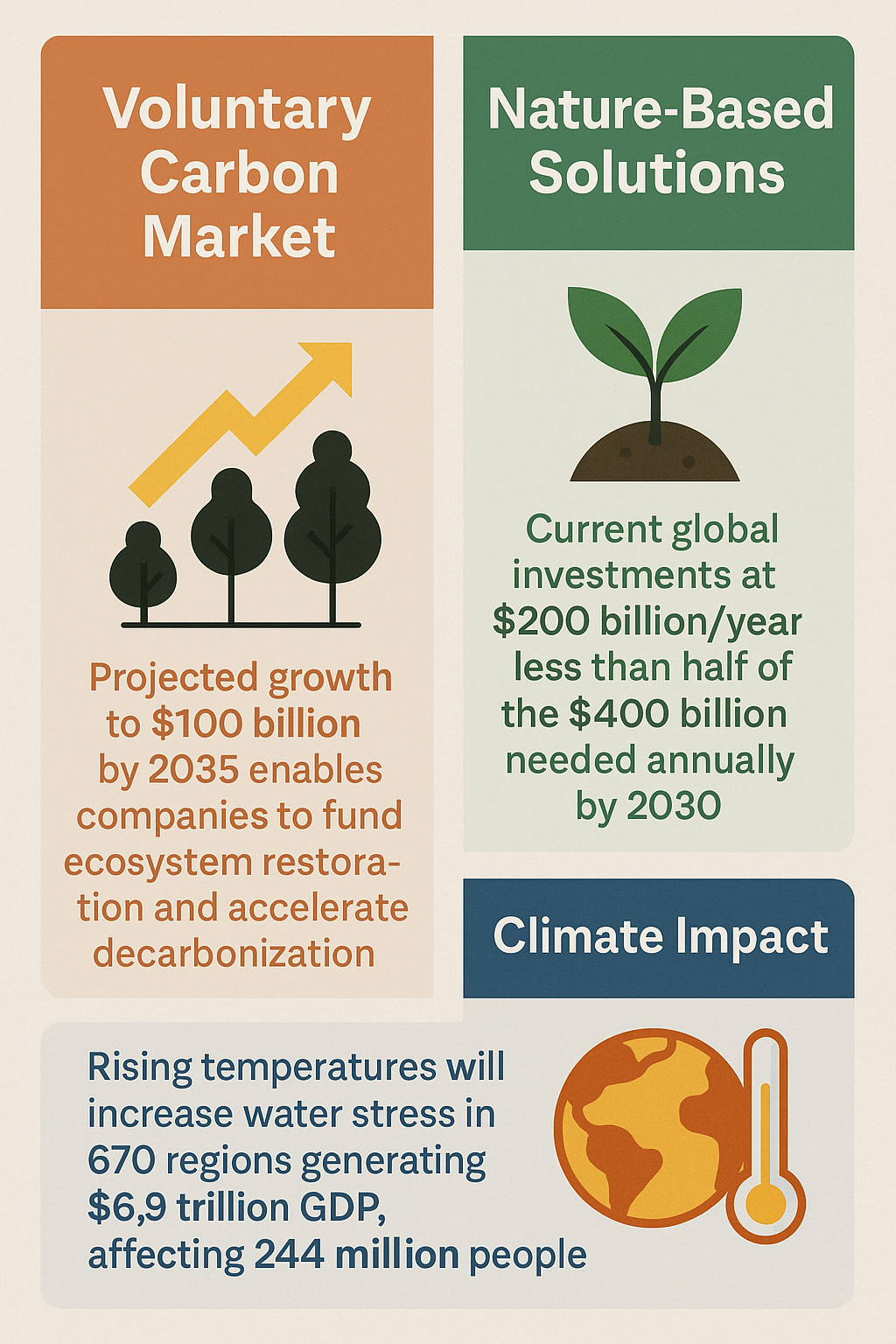Our Scans · Biodiversity · Intelligence Briefing
Intelligence Briefing about Biodiversity
Critical Trends Impacting Broward County
- Global targets to conserve 30% of land and seas by 2030 drive regional conservation efforts focused on ecosystem services (Project Syndicate).
- The UN Decade on Ecosystem Restoration highlights growing global momentum and funding for restoration initiatives through 2030 (IUCN).
- Climate change aggravates extreme heatwaves and ocean warming, leading to near extinction of iconic coral species in the Florida Keys (IFLScience).
- Innovative nature-based solutions and corporate partnerships are emerging as strategies to combat biodiversity loss while pursuing carbon-negative goals (Oxbow Partners).
- Rising water stress driven by climate change threatens coastal populations and critical ecosystems, impacting economic productivity and public health (ESG Post).
Key Challenges, Opportunities, and Risks
- Challenges: Increasing ocean temperatures and marine heatwaves threaten coral resilience and biodiversity; inadequate investment in nature-based solutions limits restoration effectiveness.
- Opportunities: Assisted gene flow techniques to rehabilitate coral populations; leveraging technology and community stewardship for sustainable biodiversity management; expanding eco-tourism and conservation-linked economic initiatives.
- Risks: Environmental damage from improper solar panel waste disposal; antibiotic contamination in waterways potentially fostering resistance and harming aquatic life; degraded ecosystems from abandoned mines threatening public health.
Scenario Development
- Best-Case Scenario: Robust investment and widespread application of restoration technologies and nature-based solutions lead to recovery of coral reefs and improved ecosystem services; Broward County becomes a model for sustainable biodiversity stewardship and climate resilience.
- Moderate Progress Scenario: Partial achievement of conservation targets with incremental restoration efforts; some coral recovery via assisted gene flow but ongoing risks from warming oceans and pollution; economic benefits from eco-tourism balanced against localized biodiversity loss.
- Stagnation Scenario: Insufficient funding and fragmented policy implementation result in limited restoration; continued degradation of marine ecosystems due to heat stress and pollution; increased water stress impacting coastal communities and ecosystems without effective mitigation.
- Worst-Case Scenario: Accelerated climate impacts and ineffective biodiversity responses cause collapse of coral populations and critical habitats; severe pollution from antibiotic runoff and solar waste exacerbates ecosystem damage; economic losses mount as natural capital declines drastically.
Strategic Questions
- How can Broward County accelerate investment in and deployment of innovative restoration techniques such as assisted gene flow for coral reefs?
- What partnerships between government, private sector, and communities could be leveraged to integrate nature-based solutions and achieve carbon-negative objectives?
- How might policy frameworks evolve to address emerging risks from pollution sources, including antibiotics in waterways and solar panel waste, to protect local biodiversity?
- What adaptive strategies could be developed to mitigate escalating water stress and coastal ecosystem vulnerabilities intensified by climate change?
Potential Actionable Insights
- Broward County could prioritize funding for pilot projects demonstrating restoration technologies and assisted gene flow to increase biodiversity resilience.
- Local authorities could explore multi-stakeholder partnerships aligning corporate sustainability goals with regional conservation planning to mobilize resources.
- Enhanced monitoring and regulation could be implemented to reduce chemical runoff and manage emerging pollution threats, protecting aquatic ecosystems.
- Integrating traditional ecological knowledge with innovative urban design could support green infrastructure that mitigates heat stress and supports biodiversity.
- Community engagement and capacity building could be expanded to strengthen stewardship and awareness of biodiversity’s role in economic and social well-being.
Briefing Created: 29/10/2025
